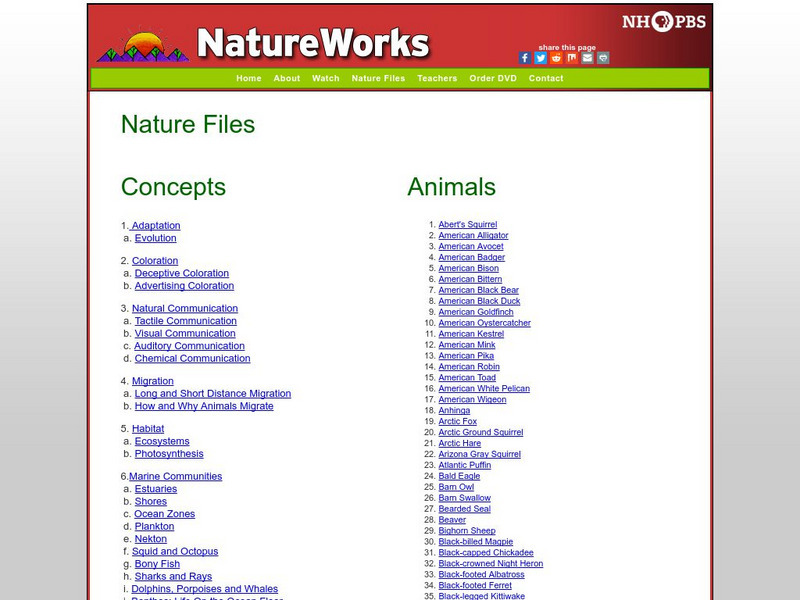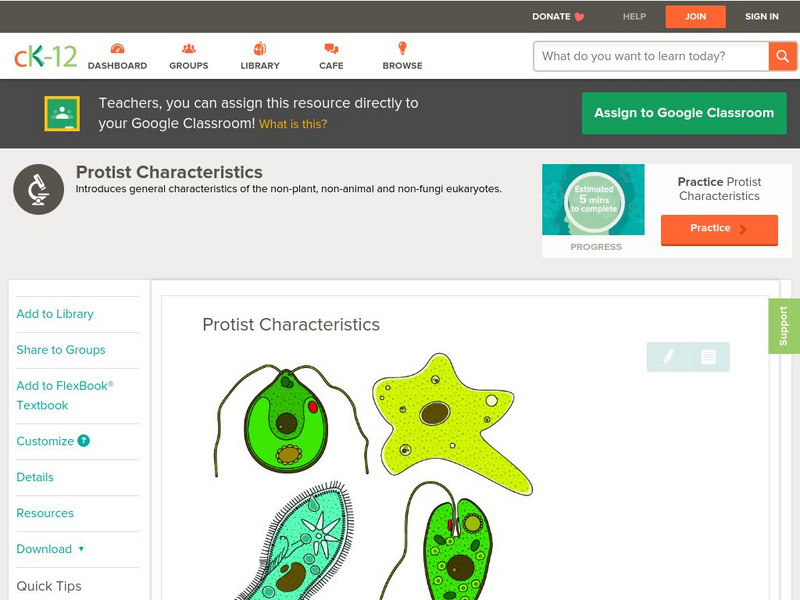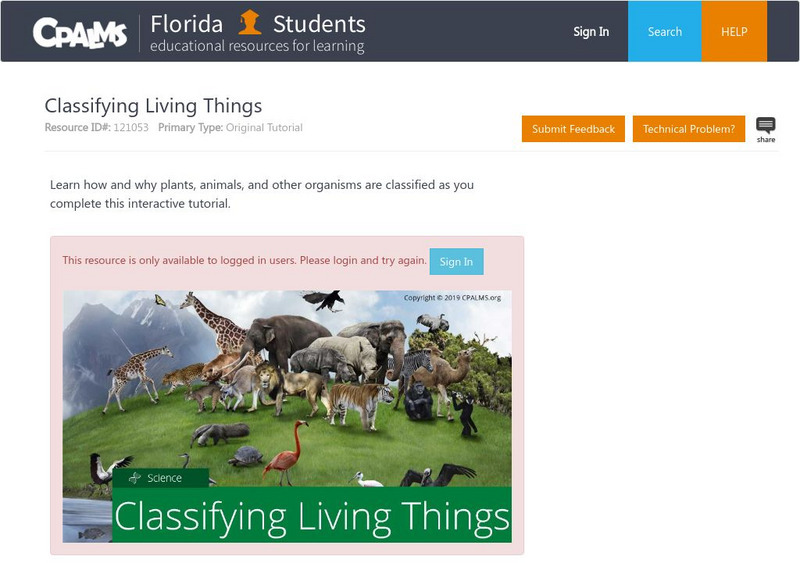Hi, what do you want to do?
Other
Alternative Classifications of Life
The Linnaean system (1758) classified all macroscopic living organisms as either Animals or Plants, based on whether they moved [anima, with a soul] or not. Thus, Fungi were included as plants. With the invention of the microscope and...
TeachEngineering
Teach Engineering: Biodomes
Students explore the biosphere's environments and ecosystems, learning along the way about the plants, animals, resources and natural cycles of our planet. Over the course of lessons 2-6, students use their growing understanding of...
Utah Education Network
Uen: Classifying Kids
Classification activity relating to plants and animals.
Utah Education Network
Uen: Keys and Classifying
Sort and classify an assortment of objects relating to classifying Utah plants and animals.
PBS
Nh Pbs: Nature Works: Nature Files
Resources to accompany a 16-episode science series created to help young minds better understand how plants and animals interact with their environment. A fantastic resource for elementary science teachers that includes state standards...
CK-12 Foundation
Ck 12: Life Science: Protist Characteristics
[Free Registration/Login may be required to access all resource tools.] Protists are eukaryotes, which means their cells have a nucleus and other membrane-bound organelles. Most protists are single-celled. Other than these features, they...
Regents of the University of Michigan
Animal Diversity Web: Kingdom Animalia
What characterizes animals from plants? General characteristics of the animal kingdom are noted here. Click on Classification for the Kingdom Animalia; clicking on the camera provides pictures of each animal.
Science Education Resource Center at Carleton College
Serc: Introduction to Dichotomous Keys
This activity serves as an introduction to the classification of plants and animals or trees. Students will investigate how to classify objects based on their similarities and differences. They will use technical writing to explain their...
CPALMS
Florida State University Cpalms: Florida Students: Classifying Living Things
Learn how all living things are classified.
Alabama Learning Exchange
Alex: Wanted Dead or Alive!
In this lesson students will identify the characteristics of living and nonliving things.
Wonderville Media
Wonderville: Ocean Habitats
Habitats are places where plants and animals live. There are many different habitats in the oceans of the world. Every plant and animal in the ocean prefers a particular habitat. Learn about Ocean Habitats in this well-constructed...
Curated OER
Secondary Science Program: The Six Kingdoms
A short overview of the six kingdoms in our scientific classification system: Plants, Animals, Protists, Fungi, Archaebacteria, and Eubacteria. A good explanation of how organisms are placed in their particular kingdom.
Curated OER
Secondary Science Program: The Six Kingdoms
A short overview of the six kingdoms in our scientific classification system: Plants, Animals, Protists, Fungi, Archaebacteria, and Eubacteria. A good explanation of how organisms are placed in their particular kingdom.
Curated OER
Secondary Science Program: The Six Kingdoms
A short overview of the six kingdoms in our scientific classification system: Plants, Animals, Protists, Fungi, Archaebacteria, and Eubacteria. A good explanation of how organisms are placed in their particular kingdom.
Curated OER
Secondary Science Program: The Six Kingdoms
A short overview of the six kingdoms in our scientific classification system: Plants, Animals, Protists, Fungi, Archaebacteria, and Eubacteria. A good explanation of how organisms are placed in their particular kingdom.













